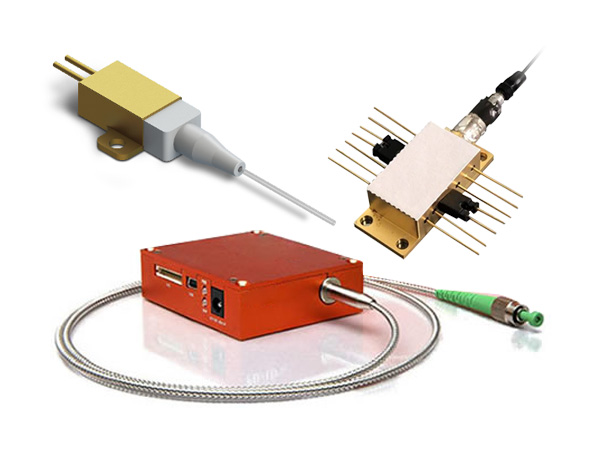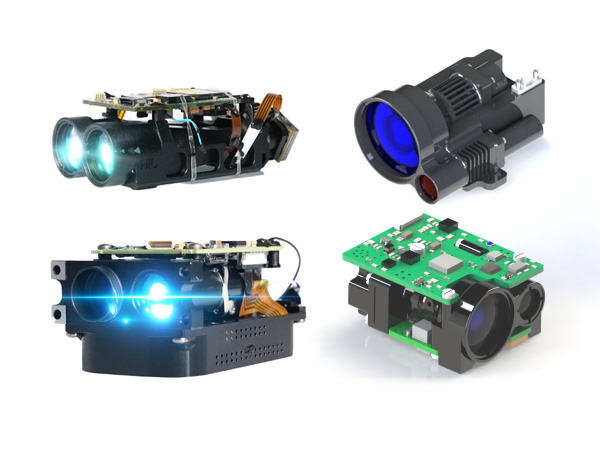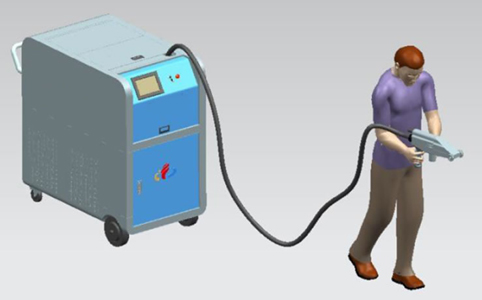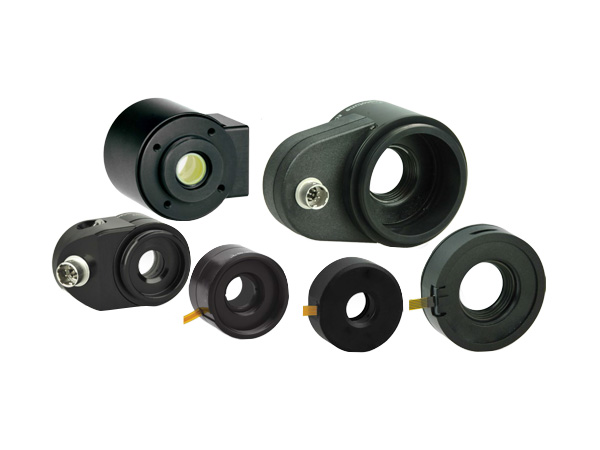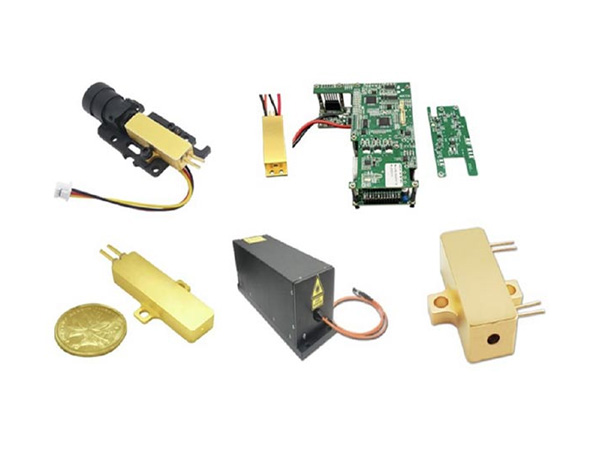How to Select An Electro-optic Q-switch (Pockels Cell)
1. How to Select an EO Q-switch to Meet Your Switching Frequency Requirement
The simple answer is that the IMPACT Pockels cells are recommended for operation at a maximum of 1-2kHz. This is not to say they will completely fail to operate at 5kHz. The contrast ratio will be sacrificed as the repetition rate is increased beyond 1kHz. The reason for this is contained within the nature of the DKDP crystal, When high voltage is applied, the crystal lattice is distorted, causing the desired Pockels effect. However, the longer that the voltage is applied, either in terms of electric pulse duration or in the repetition rate used, the distortion causes an acoustic resonance to develop. This is commonly referred to as “rining” in the crystal. This is true of any cell that uses KDP/DKDP as its crystal element. To illustrate this point, the following figures show several optical traces of the acoustic ringing from an IMPACT 8 Pockels cell when operated at 1kHz repetition rate. One trace ( time stamp 8:26:43) allows the vertical (y-axis) to autoscale to a maximum of the signal from the electrical pulse. In the second trace ( time stamp 8:25:14), we have collapsed the y-axis so that you don't see the maximum of the electrical pulse. Although the collapsed y-axis truncates the initial pulse maximum, it increases the visual appearance of the acoustic ringing following the initial pulse. In either case, you can see the acoustic ringing subsides after about 1millisec.


Although we generally recommend QX series Pockels cells for applications at >2KHz, whether or not the IMPACT 8 will work depends upon how much loss of contrast ratio their system can tolerate. But if you want a cut and dry answer, I'd recommend against operation at 5kHz. The QX and IMPACT cells use the same high quality DKDP crystal in similar sizes. The significant difference is the construction of the cell housing. The QX cell design is such that is provides some suppression of this ringing out to about 5KHz normally and is available in a damped version which will suppress this condition to <10KHz.
The BBO cell will operate into the 500KHz region and higher.
2. How to Select Aperture
In a Gaussian beam there will be ~10% of the laser energy present at a diameter of 2-3 times the 1/e^2 diameter. This will result is a significant loss of energy in the system and this energy can scatter inside of the cell and damage the celI. We would suggest that the aperture of the Q-switch is 2 to 3 times of laser beam diameter (1/e2). If the beam can be modified into something close to a "tophat" profile then the aperture requirement drops substantially.
3. What is maximum allowed laser energy? what is the maximum allowed peak power? What is the maximum peak power beam which can be switched off?
If you have a large, perfect beam you can get much more energy through the cell without damage than if you have a beam with hot spots and caustic retro-reflections, etc. In an 8.5mm beam, "typical" maximum wattages would range from 5-30W but, theoretically, DKDP can be used into the 50-75W region...but EVERYTHING has to be perfect. This is one of those situations where general rules just don't have much use.
4. What is the laser beam pulse width and rise time?
The performance of the cell is directly related to the driver. The cell has a theoretical rise time on the order of 80ps...but the best drivers can only drive a rise time of 2-6ns. Pulse width and fall time are similarly affected. The electronics are fairly simple for a q-switch driver at 1/4 wave and a few Hz. Driver designs get MUCH more complicated for a region or a pulse picker at 10 or 100KHz and 1/2 wave voltage.
5. Do we need a waveplate?
Our cell does not contain a waveplate in it. If the customers application requires a 1/4 waveplate then he will have to add it into the system himself.
6. How to Select a Driver?
Any driver that produces ~3KV (2.6KV) will operate the cell to 1/4 wave. The driver that we offer at http://www.sintecoptronics.com/qswi tcheoDriver.htm should work.
7. How to Select Pulse Shape and Duty Cycle?
You can operate the cell with either a pull-up voltage or a pull-down voltage. Changing the polarity will only change the direction of the phase rotation. You should not, however, operate the cell with a constant applied voltage potential between the terminals, or a duty cycle greater than ~ 2%. "Pull-down" usually involves a constant applied or bias voltage. This type of operation is specifically not recommended. We have had customers that use this method to varying degrees of success. This type of operation usually results in dramatically reduced cell lifetimes. We offer no warranty coverage on cells that have been used in this manner.
8. How about Operation Environment?
Our recommended range would be in the 10-30 deg C range. Higher temps will seriously degrade performance. Voltage requirements will change with temperature as well. Also important is the rate of temperature increase. KDP is quite sensitive to thermal shock KD*P cells should never be warmed or cooled at a rate of more than 1-2 deg per hour.
9. How to Place an order for a QX cell?
Fluid filled cells are provided for legacy systems or special applications only. SolGel dry type cells are recommended for optimal performance in most systems. When you place the order for a QX cell, please define window wedge (0 deg or 1 deg) and endcap stype (DT, TK, TN).
Pockels Cell (EO Q-switch) Questionnaire
If you would like us to make a Pockels cell recommendation, we would like to know the following information about your application:
- Information needed for any Pockels cell inquiry
1 | What is the application of this pockels cell (Q-switch, regenerative amplifier, pulse picker or other)? |
Ans : |
|
2 | What is the beam diameter or radius (1/e2 value)? Please specify as Radius of Diameter. |
Ans : |
|
3 | What is the beam profile (Guassian, Pseudo-Gaussian, Top-hat, etc)? |
Ans : |
|
4 | What is the wavelength of operation (nm)? |
Ans : |
|
5 | What is the laser repetition rate? |
Ans : |
|
6 | What is the laser peak power (extra-cavity)? |
Ans : |
|
7 | What is the energy-per-pulse? |
Ans : |
|
8 | What is the pulse width (FWHM)? |
Ans : |
|
9 | Will you use the cell in quarter-wave or half-wave operation? |
Ans : |
|
10 | What is the cell repetition rate and voltage pulse duration that you intend to use? |
Ans : |
|
11 | What is your duty cycle? |
Ans : |
|
12 | What is the operating environment at the cell (temp, atmosphere, humidity)? |
Ans : |
|
13 | If using a laser cavity, what is the finesse or output coupler reflectivity? |
Ans : |
|
14 | Do you intend to use a bias or constant on voltage, switching to ground? (This is not typically recommended and may cause short cell life) |
Ans : |
|
15 | What quantity do you require? |
Ans : |
|
 English
English Français
Français Deutsch
Deutsch euskara
euskara Русский язык
Русский язык Italiano
Italiano Português
Português Nederlands
Nederlands Polski
Polski Greek
Greek Lietuva
Lietuva Türkçe
Türkçe 日本語
日本語 한어
한어 中文
中文 தாமில்
தாமில் فارسی
فارسی हिंदी
हिंदी Tiếng Việt
Tiếng Việt ภาษาไทย
ภาษาไทย Pilipino
Pilipino Indonesia
Indonesia தாமில்
தாமில்
